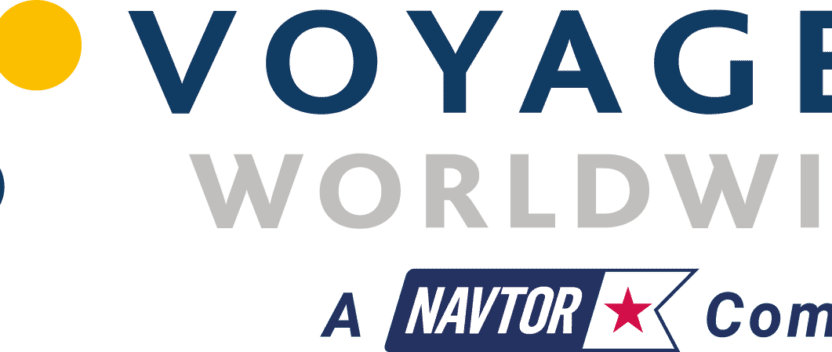Come together: Can the IMO reach e-Navigation Nirvana?

We’ve spoken to John Erik Hagen, regional director the Norwegian Coastal Administration and chair of the working group responsible for the progression on e-Navigation to get his latest views. Read the article here.
The IMO’s strategy for e-Navigation is not one of its highest profile pieces of work, nor is it the regulator’s most controversial. But it might lay claim to being one of the most misunderstood, since it has a definition that at times has divided opinion as to its meaning and implications.
But to John Erik Hagen, regional director of the Norwegian Coastal Administration and chair of the working group responsible for progressing e-Navigation from drawing board to ship’s bridge and beyond, it is a task with very clear objectives, and a process that has made consistently good progress over the past couple of years.
From an industry perspective, the contemporary e-Navigation landscape has been marked by continued handwringing over ECDIS implementation and the need to defend navigational skills. Shipping is undergoing a boom in data communications but there are still concerns about whether position input and other systems, AIS included, can be made safe from hackers or accidental disruption.
At the e-Navigation Revolution conference at the end of 2013 opinion was strongly divided as to whether the process had ‘cart and horse’ in the right order, with critics warning that it must not turn into a repeat of the ECDIS mandation process or turn into an excuse to line the equipment vendors’ pockets.
Others talked in glowing terms of the ability of e-Navigation to bring together all the currently disparate elements of navigation, communication, VTS and positioning to provide navigational nirvana that would satisfy old salts and junior officers alike.
For Hagen, the increased use of the term itself is a kind of proof that the concept is becoming accepted and that the industry is beginning to understand the potential of e-Navigation. And both the members of the NAV sub-committee and e-Navigation correspondence group are keenly aware that keeping the industry informed is crucial.
But is he worried that the industry is saying ‘e-Navigation’ when it really means ‘ECDIS navigation’?
“We believe that it is a positive sign that industry really does understand what e-Navigation is,” he says. “The correspondence group has good and active industry representation. And we are preparing a communications plan to ensure that all stakeholders will understand e-Navigation as is now perceived by IMO.”
The preliminary draft of the Strategy Implementation Plan (SIP) for e-Navigation was endorsed by the NAV sub-committee at its 59th session and will be presented at the first meeting of the Maritime Safety Committee this year, exactly on the schedule it established more than two years ago.
The SIP aims to integrate new and existing navigational tools, in particular electronic ones, into an all-embracing, transparent, user-friendly, cost-effective and compatible system. This, it is hoped, will contribute to enhanced navigational safety while simultaneously reducing the burden on the navigator.
The NAV sub-committee also endorsed five prioritised potential e-Navigation ‘solutions’, which include improved, harmonised and user-friendly bridge design; the means for standardized and automated reporting; improved reliability, resilience and integrity of bridge equipment and navigation information; integration and presentation of available information in graphical displays received via communication equipment and improved communication of vessel traffic services.
“Three of the chosen e-Navigation solutions focus on efficient transfer of marine information and data between users, while two solutions the workable and practical use of the information and data onboard,” he explains. “The combination of these solutions ensures a holistic approach to the interaction between shipboard and shore-based users, based on identified user needs.”
The five solutions are supplemented by seven Risk Control Options (RCOs) that together with the solutions make up the first iteration of e-Navigation.
These are the integration of navigation information and equipment, including improved software quality assurance; bridge alert management; standardised mode(s) for navigation equipment; automated and standardised ship-shore reporting; improved reliability and resilience of onboard PNT systems; improved shore-based services and bridge/workstation layout standardisation.
All seven RCOs have undergone risk and cost-benefit analyses and Hagen says the SIP lays out the three proposed key phases of the strategy;
- the Model Development Phase (2015-2016) where the proof of concept model is approved;
- the Standardisation Phase (2017-2018), where the relevant existing standards are updated and if necessary new standards drafted,
- and the Implementation Phase (2018-2019) where systems are available for installation ashore and onboard.
The sub-committee also noted progress in developing draft guidelines on human centred design for navigational equipment and systems; usability evaluation of navigational equipment; software quality assurance and the harmonization of test bed reporting.
Given the recent grumblings by some industry bodies, this progress should be taken as encouraging news. e-Navigation now appears to comprise all the things that have been promised for years, including an implementation phase that is within touching distance. Hagen is quick to stress that nothing in the SIP has yet been approved by the Maritime Safety Committee, but one senses he is confident the direction of travel is set.
In the meantime, new issues are emerging. Last year’s ‘hacking’ of AIS and the general fear that with greater communications traffic, the threat of interception naturally increases too, has put cyber security on the correspondence group’s agenda.
“It is

Another concern – certainly one expressed by industry bodies – is how much of e-Navigation might eventually be a mandated set of regulations and how much remains a voluntary system where benefits flow to those who embrace the opportunity. Hagen broadly sees the latter scenario.
“The general wish of IMO member states is that this should be a voluntary system. However, it might be that some very busy ports might give priority to ships that take part, certainly with the electronic reporting,” he says. “It is also possible that when e-Navigation is seen to be working well, the resistance to mandatory carriage could diminish.”
For that to happen, certain sections of the industry will need to see tangible safety and follow-on commercial benefits flowing from e-Navigation. Some are still concerned that the ECDIS experience, where they feel carriage was mandated without realistic risk analysis, chart data availability and robustness in the carriage requirements, could be repeated if the process is not tightly controlled.
Not surprisingly, for the man charged with bringing this ship safely to its berth, Hagen disagrees. Yes some new systems or onboard equipment might be necessary – after all, the concept relies on having integrated data and an integrated navigation system to fulfil its requirements – but adding systems or layers of complexity is the opposite of what the IMO is trying to achieve.
“It may be necessary to provide some extra equipment onboard to meet these user requirements particularly for data communications, position and timing inputs,” he says. “The basis for our gap analysis which decided the five solutions and the risk control options was that e-Navigation is completely focussed on user needs.”



